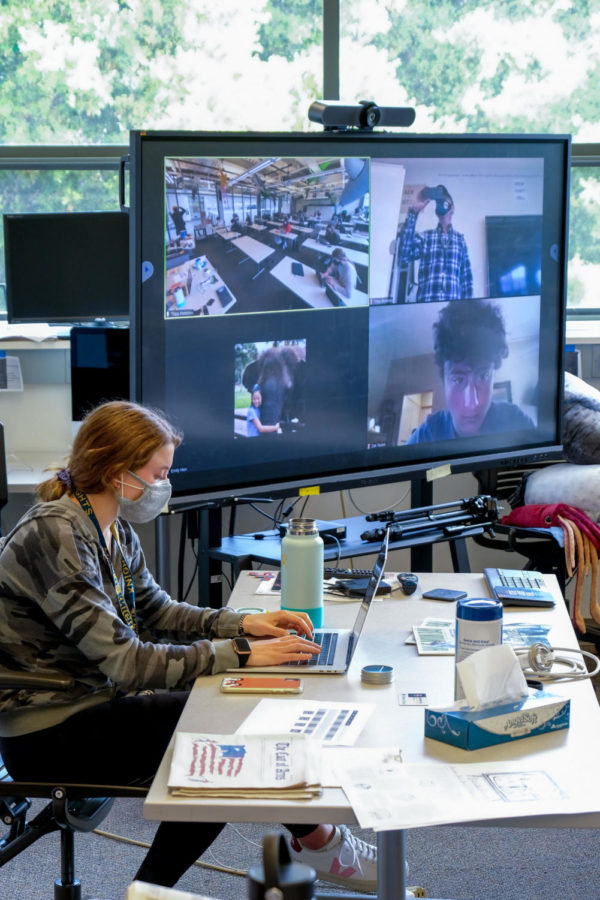Hybrid Learning Protocols Challenge Teachers
May 8, 2022
While this image is from hybrid learning last school year, students may still attend classes over Zoom if they test positive for COVID-19. Photo courtesy of Pete Zivkov.
At Menlo, if a student is positive for COVID-19, they are recommended to join their classes over Zoom if they are capable of doing so. However, if a student is sick or cannot attend class for some other reason, some teachers allow the student to join over Zoom while other teachers have the student work asynchronously.
Upper School Director John Schafer announced that the protocol for Zoom is unresolved for now. While someone with COVID-19 is allowed to join over Zoom, it is still unclear whether or not a student can join over Zoom if they have a different problem. “We set up Zoom because of COVID-19 for students who were in isolation or unable to do work in person,” Schafer said. “Going forward, of course, we hope to move out of [hybrid learning], since now many students are not absent due to some kind of COVID-19 exposure. We’re not there yet.”
According to Schafer, there are challenges to teaching hybrid learning, especially when there are more students in class than on Zoom. “Back when we were all Zoom, there wasn’t a problem. We were designing our classes for Zoom teaching,” Schafer said. “But now, we’re designing our classes for in-person teaching, which is substantially different and, of course, substantially better.”
Upper School history teacher Matthew Nelson agreed with Schafer on the difficulties of teaching in a classroom while a few students are online. “It is extraordinarily difficult to teach in hybrid mode, but on top of that, hybrid mode where all the students but one are in the classroom [is even harder],” Nelson said. “I so easily forget the student who’s on Zoom. It’s really hard to develop lesson plans just for the one kid who’s on Zoom.”
Even though Nelson feels the difficulties of teaching a semi-hybrid class, he also believed that especially after COVID-19, the regulations from the past few years are still prevalent. “I guess with COVID-19, it’s set a precedent from an extraordinary circumstance of a pandemic, and so we made certain accommodations, and what we’re trying to do is retain students off of the accommodation so that school doesn’t just move into a permanent hybrid mode,” Nelson said.
Schafer emphasized the struggles of balancing online and in-person instruction. “I both want to support students who are staying home because we don’t want a potential infectious student coming onto campus,” Schafer said. “But I also want to steer as much of our instruction to the in-person instruction, which is the core of our program.”
Schafer proposed the idea of setting up minimally interactive classes for students who stay at home. “I would like to maybe set up class in sort of a passive way by maybe letting students who are at home watch class,” Schafer said. He mentioned having students just listen to the class and participate a little without the teacher needing to change their lesson plan.
This idea is similar to the practices of mathematics teacher Sujata Ganpule. “I, by default, go on Zoom [for every class] because I use it to project things during class. So if there’s a student there on Zoom, I just check in with them, but I’m not really teaching them,” Ganpule said. “I just [make sure they] listen to what’s going on and look at the schedule, and I tell them to let me know if they have questions.”
